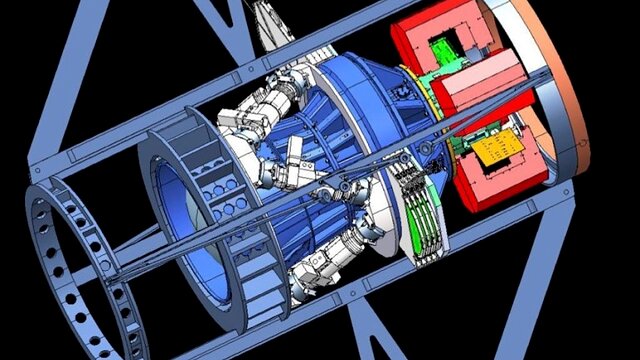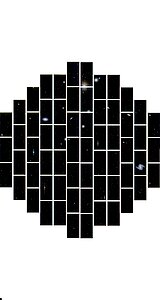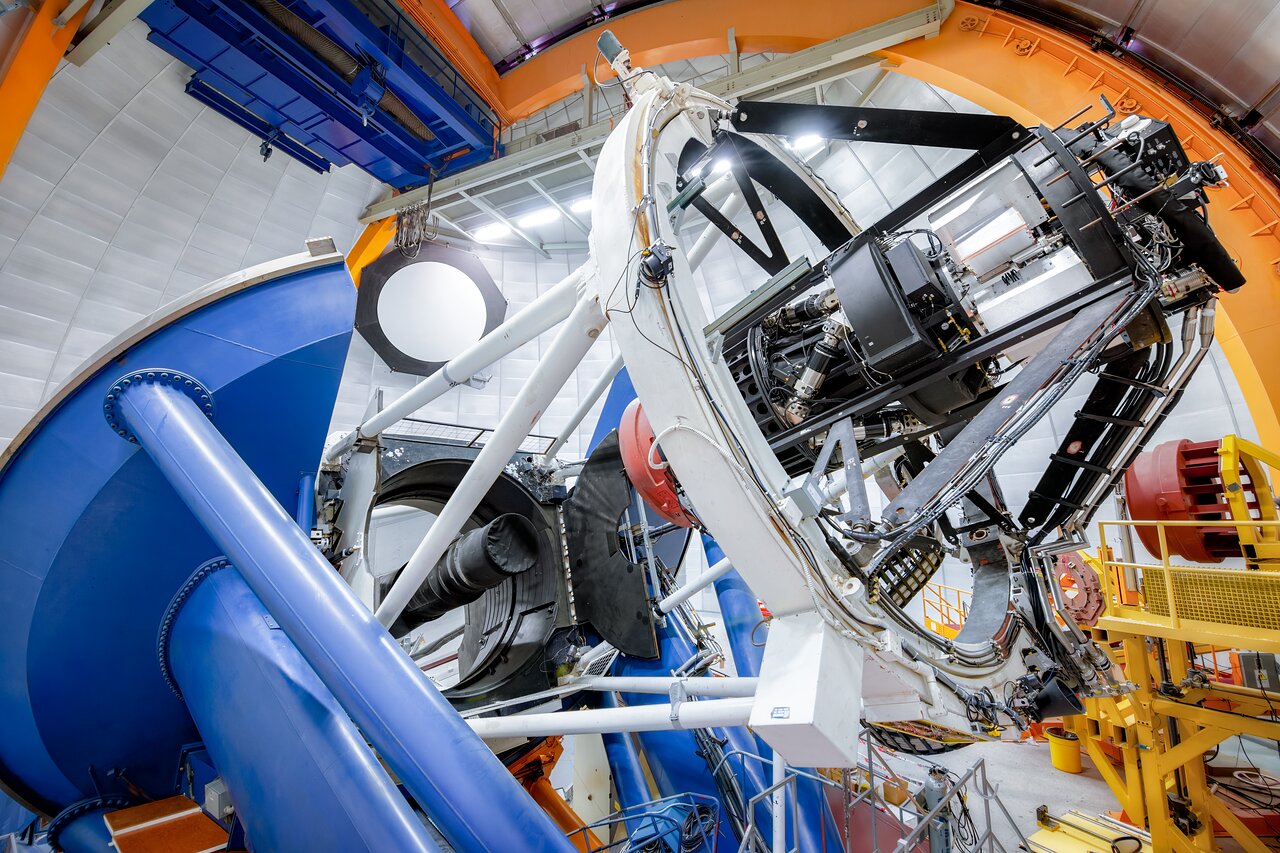Dark Energy Camera (DECam)
DECam mounted at the Víctor M. Blanco 4-meter Telescope.
The Dark Energy Camera (DECam) is a high-performance, wide-field CCD imager mounted at the prime focus of the Víctor M. Blanco 4-meter Telescope at Cerro Tololo Inter-American Observatory. It boasts 62 science CCDs and 12 CCDs for guiding and focus, with 570 megapixels, and images a 3-square-degree field (2.2 degrees wide) at a resolution of 0.263 arcsecond per pixel. DECam is a facility instrument, available to all users. It was designed specifically for the Dark Energy Survey and was operated by the Department of Energy (DOE) and the National Science Foundation (NSF) between 2013 and 2019.
The major components are a five-element optical corrector, four filter slides, each holding two filters, a shutter, and a cryostat (“imager vessel”) holding the focal plane of 62 science CCD sensors, eight wavefront-sensing CCDs, four guide CCDs and pre-amplifiers. Four electronics crates are mounted around the imager vessel. The focal plane is cooled by a liquid nitrogen flow system with off-telescope regeneration and storage. The CCDs, imager vessel, shutter, filters and corrector are supported as a single unit by a hexapod that provides accurate adjustability in focus, lateral translations, tip, and tilt. This provides a real-time focus and alignment system to maintain high image quality.

Model rendering of the Dark Energy Camera (DECam), showing all the major components: optics cage (blue rings at lower left), hexapod (white, diagonally oriented tubular structures near center), shutter (white, flat element near top right and above hexapod), filters (green, to right of hexapod), imager (between red boxes at right).
Science Highlights of DECam
- New Stellar Streams Confirm ‘Melting Pot’ History of the Galaxy
- Extreme Dwarf Planet Discovered in Search for Planet X
- Twelve More Jovian Moons
- Dark Energy Camera Snaps Deepest Photo yet of Galactic Siblings
- Fastest Orbiting Asteroid Discovered at NOIRLab’s CTIO
- Giant Comet Found in Outer Solar System by Dark Energy Survey
 |
 |
| Close-up of the DECam focal plane populated with 74 CCDs. | First-light image from DECam. |
Quick Facts
- A single raw DECam exposure is 0.5 GB in size (compressed).
- 15 full moons will fit in a single DECam image.
- Nearly 1 billion objects were cataloged by The Dark Energy Survey using DECam.
- The first and biggest of DECam’s lenses is nearly a meter (3.3 feet) across and weighs 176 kilograms (388 pounds); it is the second-largest optical corrector component currently in use in astronomy.
|
Dark Energy Camera (DECam) The technical information for astronomical observations is available at the NOIRLab Science webpage. |
|
|
Site |
Cerro Tololo |
|
Telescope |
Víctor M. Blanco 4-meter Telescope |
|
Type |
Imager |
|
Wavelength range |
350–1050 nm |
|
Spatial resolution |
0.2637 arcsec/pixel (center), 0.2626 arcsec/pixel (edge) |
|
Number of detectors |
74: 62 science, 8 focus & alignment and 4 guide |
|
Detector format |
2048 x 4096 pixels (science) 2048 x 2048 pixels (focus,alignment and guide) |
|
Detector total size |
520 Megapixels |
|
Spectral resolution |
5–50 nm |
|
Field of view |
3 square degrees (2.2 degrees wide) |
|
Filters |
9 filters: u, g, r, i, z, Y, VR, N662 and N964 |
|
Date of first light |
12 September 2012 |
|
Science goals |
Perform a deep and wide photometric survey of the southern Galactic cap with the primary goal of studying the nature of dark energy using four complementary probes: galaxy clusters, weak lensing, Type Ia supernovae (SNe Ia), and baryon acoustic oscillations. DECam has been used to study objects ranging from near-Earth objects to the high-redshift Universe. |
|
Images taken with the instruments |
Link |
|
Images of the instrument |
Link |
|
Videos of the Instrument |
Link |
|
Press releases with the instrument |
DECam |

